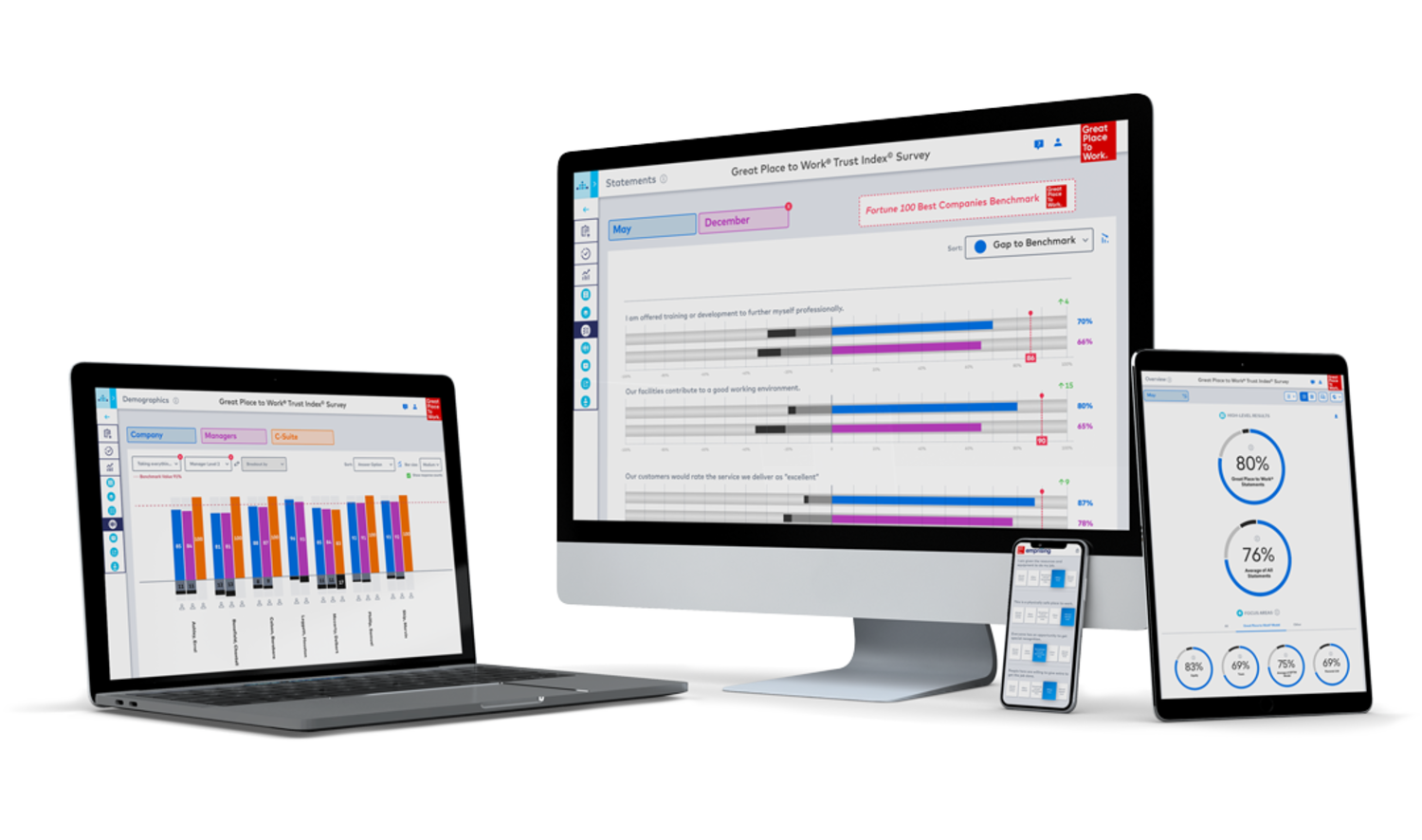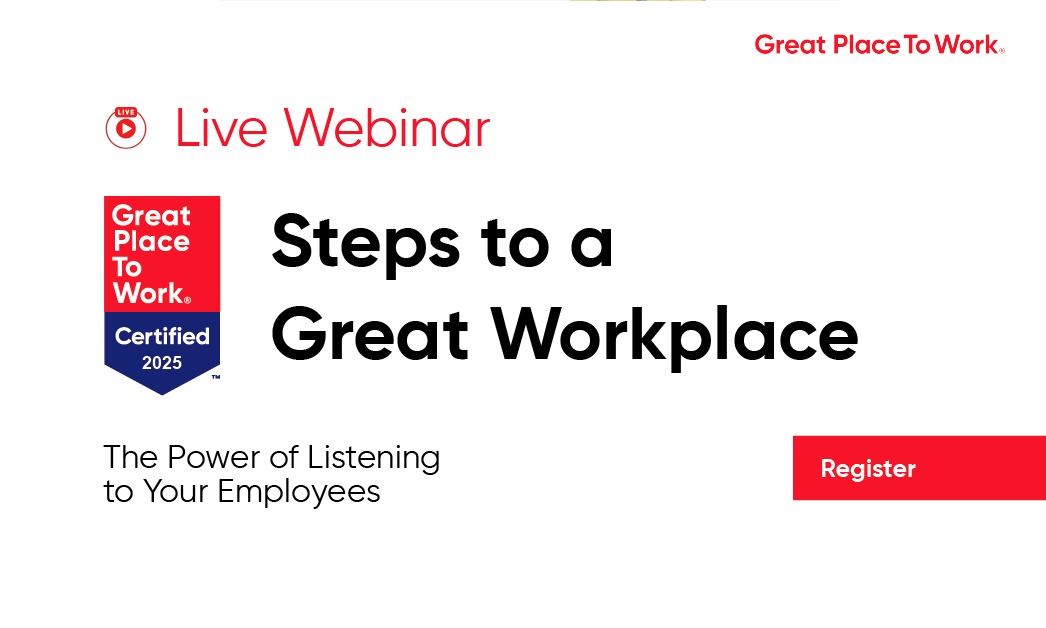In today's competitive business environment, attracting and retaining top talent is more crucial than ever. Organisations are increasingly recognizing that a strong workplace culture is not just a nice-to-have, but a vital component of business success. To understand the value that workplace culture brings to organisation it has to be effectively measured against a number of parameters including its impact on employee engagement and productivity. In other words, it is important to have excellent analytics to effectively measure workplace improvements or decline over a period. Great Place to Work (GPTW) analytics provides invaluable insights that can transform an organisation’s culture, leading to enhanced employee satisfaction, higher retention rates, and improved productivity. In this article, we explore why GPTW analytics is an essential tool for HR professionals and company executives.
Understanding Great Place to Work Analytics
Great Place to Work analytics involves the systematic collection and analysis of data regarding employee experiences and workplace culture. It conducts comprehensive surveys that assess various dimensions of the workplace, including trust in leadership, pride in work, and camaraderie among colleagues. The results are then benchmarked against top-performing companies, providing a clear picture of where an organisation stands.
Enhancing Employee Satisfaction
One of the primary benefits of GPTW analytics is its ability to measure and enhance employee satisfaction. Satisfied employees are more engaged, productive, and loyal to the organisation. Here’s how GPTW analytics contributes to this:
1. Identifying Pain Points: The detailed surveys reveal specific areas where employees feel dissatisfied or disengaged. This could range from lack of recognition to poor work-life balance. Understanding these pain points allows HR to address them proactively.
2. Actionable Insights: GPTW analytics doesn’t just identify problems; it provides actionable insights. For example, if employees feel undervalued, the data might suggest implementing a more robust recognition program.
3. Continuous Improvement: Regularly conducting these surveys helps track the impact of implemented changes, ensuring continuous improvement in employee satisfaction.
Boosting Retention Rates
High turnover rates are costly and disruptive. GPTW analytics can play a significant role in boosting retention by creating a workplace environment where employees want to stay:
1. Predictive Analysis: GPTW analytics can predict employee turnover by identifying patterns and correlations between employee feedback and employee turnover intentions. This allows HR to intervene thereby preventing valuable employees from leaving.
2. Building Loyalty: By addressing the concerns highlighted in the surveys, organisations can build stronger loyalty among their workforce. Employees who feel heard and valued are less likely to seek opportunities elsewhere.
3. Employee Development: Insights from GPTW surveys can highlight gaps in employee development programs. By enhancing training and career growth opportunities, organisation can increase job satisfaction and loyalty.
Impact on Productivity
A positive workplace culture, as measured and analyzed by GPTW, directly impacts productivity. Here’s how:
1. Increased Engagement: Engaged employees are more productive. GPTW analytics helps identify factors that drive engagement, allowing organisation to foster a more motivated and productive workforce.
2. Efficient Processes: The data can reveal inefficiencies in work processes and communication. Addressing these can streamline operations, making employees more efficient and productive.
3. Innovation and Collaboration: A great workplace culture encourages innovation and collaboration. Employees in positive environments are more likely to share ideas and work together effectively, driving productivity and innovation.
Why you need this Analytics.
Given the substantial benefits, it is clear why HR professionals and company executives should invest in GPTW analytics. Here are compelling reasons to consider:
1. Benchmarking Against the Best: GPTW provides benchmarks against top-performing organisations, offering a clear standard to strive for. This comparison helps organisations understand what they need to do to become a top employer.
2. Comprehensive Feedback: The depth and breadth of GPTW surveys ensure that no aspect of the employee experience is overlooked. This comprehensive feedback is invaluable for making informed decisions.
3. Building Employer Brand: Being recognized as a Great Place to Work can significantly enhance an organisation’s employer brand. This recognition attracts top talent, giving the organisation a competitive edge in the job market.
4. Strategic Advantage: Investing in GPTW analytics provides a strategic advantage. By fostering a positive workplace culture, organisations can achieve higher employee satisfaction, better retention, and increased productivity, all of which contribute to overall business success.
Great Place to Work analytics is more than just a tool for measuring employee satisfaction; it is a strategic asset that can transform an organisation’s culture and performance. For HR professionals and company executives, leveraging GPTW analytics means gaining deeper insights into their workforce, addressing issues proactively, and fostering a workplace environment that drives satisfaction, loyalty, and productivity. In an era where workplace culture is increasingly recognized as a key driver of business success, investing in GPTW analytics is a decision that can yield significant returns. Get started today and gain the insight you need.


